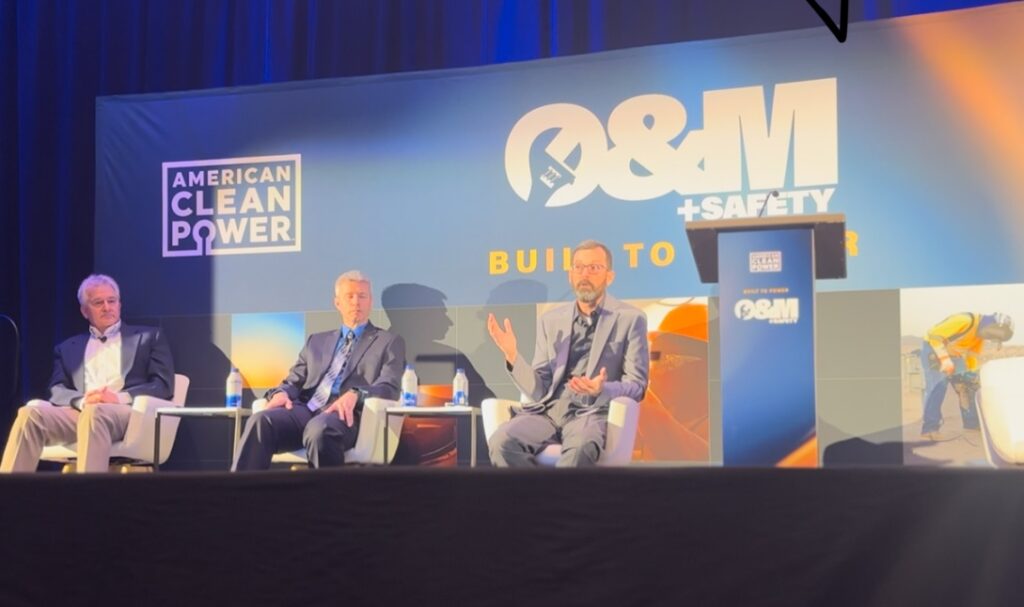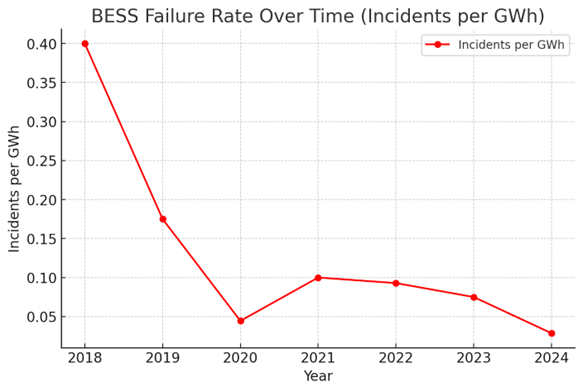
Brian Cashion, director of engineering at Firetrace International, writes that community engagement and local support are essential to battery storage deployment, and the industry can do much more.
The election of a new US administration has led to a wave of uncertainty across the renewables industry after its executive order attack on wind. Many fear the new administration will introduce new reforms to the battery energy storage system (BESS) market next, scaling back or withdrawing federal tax credits that will delay or even cancel BESS projects.
Enjoy 12 months of exclusive analysis
- Regular insight and analysis of the industry’s biggest developments
- In-depth interviews with the industry’s leading figures
- Annual digital subscription to the PV Tech Power journal
- Discounts on Solar Media’s portfolio of events, in-person and virtual
Or continue reading this article for free
While these concerns are legitimate, they distract from the bigger elephant in the room that has the potential to hold back the sector’s growth: community opposition.
In the last year alone, several important BESS projects in New York, Maryland and other states have been cancelled or delayed due to a rise in community opposition. This has been driven by a mix of widely reported BESS fires, safety concerns, misinformation and a lack of awareness of the benefits BESS sites can bring to local communities.
Rather than worrying about whether the new administration’s policies will impact the US BESS industry, we should focus our efforts on addressing local push back, tackling misconceptions around its impressive safety record, and educating citizens on the benefits of BESS. If we don’t, we risk holding back the growth of the US BESS industry and derailing the renewable energy transition.
What’s driving local opposition to BESS sites?
Over the last few years, many local communities have pushed back against BESS sites due to the fear that they could catch fire. Several high-profile battery fires have fuelled these concerns – most notably in California, New York and Arizona. However, when you look at the performance data and safety record of BESS technology, it is clear that fires occur far less frequently than people may think.
In fact, the latest Electric Power Research Institute (EPRI) data shows that between 2018 and 2023, BESS failure incidents dropped by a whopping 97% – demonstrating that fires started by faulty lithium-ion batteries are rare in modern installations. Today, there is one fire in every 35GW of batteries installed. The EPRI data also proves that this technology is becoming safer with every instalment.

At a broader level, local communities are often unaware of the significant benefits that BESS sites can create, including lower electricity bills, cleaner air and more reliable power. Many local citizens, understandably, don’t want large infrastructure projects near their homes, fearing they could impact property prices and the aesthetics of the local area.
Opposition has made it even harder for developers to secure community support for BESS sites, and it must be addressed to ensure more are constructed.
How can BESS developers secure community support for sites?
Clearly, a number of big misconceptions around the safety and the inherent benefits of BESS sites still persist – which has already led to important projects, critical to energy infrastructure, being delayed or cancelled.
The rise in community opposition is also putting off investors, who provide the crucial financial support needed to get projects off the ground. However, there are a number of steps that BESS developers and Authorities Having Jurisdiction (AHJs) can take to secure community support, addressing safety concerns and ensure residents clearly understand the benefits of sites.
Getting out from behind the desk to meet the community will break down barriers:
- Engaging with local communities from the outset – Engaging and communicating with residents before submitting a permit or planning application is critical. This includes hosting town halls and Q&A sessions to explain the benefits of BESS sites and the steps you will take to ensure safety – especially from a fire risk point of view.
- Working with local planning authorities and fire service – Ensuring local planning authorities and fire services are consulted on the design of BESS sites is essential to securing community support and planning permission. This step will help calm community concerns and get local authorities to back projects.
- Make sure BESS sites are safe from the start – One of the most straightforward steps developers can take is to ensure that BESS sites have all the correct safety features built in from the beginning. Installing the latest safety technologies – including fire suppression and battery monitoring systems – will help address safety concerns and ensure sites are fully protected.
If we want to build a resilient energy grid, dependent on renewable energy alone, we must allow BESS technology to grow across the US.
We need to avoid the distraction of the new administration’s policies. Will or won’t they impact the industry? Who knows? If they do, the impact will likely be temporary. But right now, the rise in community opposition, driven by misguided safety concerns and isolated BESS fires, is having a real and significant impact and stalling the construction of important projects.
By taking a proactive approach to clearly explain the benefits and safety of BESS sites to local communities, developers can win support and ensure more sites are rolled out. In turn, this will help to accelerate industry growth, deliver sustainable energy to millions and fast-track the decarbonisation of the US economy.
About the Author
Brian Cashion is director of engineering at Firetrace International, a global innovator and manufacturer of fire suppression systems, both pre-engineered for special hazard enclosures and engineered clean agent systems for larger enclosures, as well as full room total flooding.

